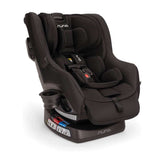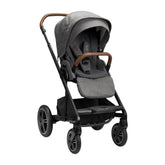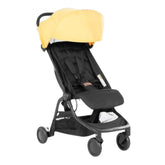Seeing Red? What You Need to Know About Roseola Infantum

Updated 26 Dec 2024
If your sweetie’s torso is covered in a pink rash about a week after being sick with a fever, there’s a good chance they contracted roseola. Roseola infantum (also known as sixth disease) is a viral infection that primarily affects children between the ages of 6 months and 2 years. Roseola is most contagious before the tell-tale rash develops and is spread through saliva or viral particles in respiratory droplets when the infected child speaks, sneezes, or coughs. Let’s take a closer look at what are the signs of roseola as well as treatment for roseola.
Is Roseola the Same as RSV?
No, roseola and RSV are not the same. Roseola is typically caused by the human herpesvirus (HHV) type 6 (thus, the reason it’s sometimes referred to as “sixth disease”). Occasionally, it may be caused by HHV type 7 or another virus. These viruses are part of the same family as the well-known herpes simplex viruses (HSV) but don’t trigger the cold sores and genital herpes outbreaks that HSV can cause. RSV, on the other hand, is caused by the respiratory syncytial virus.
Roseola Signs and Symptoms: What Is the Classic Presentation of Roseola
Roseola symptoms typically show up about ten days following the initial infection. Most kids start out with a high fever (frequently higher than 103° F) that may last anywhere from three days up to a week. After the fever subsides, a pink or red rash blooms across the abdomen and/or the back, arms, and neck. The rash may last for only a few hours or fade after a day or two and is not painful or itchy. Roseola is most infectious during the high fever period. Once your child’s temperature has returned to normal for 24 hours (between 97.5° F and 99.5° F), they are no longer contagious (even if the rash is still present).
Sometimes kids infected with roseola may have additional cold symptoms, like sore throat, cough, runny nose, swollen lymph nodes, or upset stomach. The rapidly rising fever may also trigger febrile seizures (convulsions caused by high fevers) in about 10% to 15% of infected children. Kids experiencing a febrile seizure may lose consciousness, jerk or twitch their bodies, and temporarily lose control of their bowels or bladder. Though they’re rarely harmful, you should contact your pediatrician or seek emergency care if you suspect that your little one has had a febrile seizure.

Roseola infantum. Image from Wikimedia Commons.
Diagnosis and Treatment: How to You Treat Roseola in Children?
Your pediatrician can diagnose roseola based on your little one’s symptoms. Roseola typically resolves on its own in about a week or so. Acetaminophen or ibuprofen can help with managing the fever, but the rash likely won’t need treatment since it’s not itchy or uncomfortable. Kids with a compromised immune system may need an additional boost from antiviral medications.
Contact your pediatrician if your little one has a fever above 102° F for more than a day with no other symptoms or if they’re experiencing nausea, vomiting, diarrhea, or difficulty breathing. Be on the lookout as well for extreme fatigue or signs of dehydration. If the rash seems painful or itchy, contact the doctor.
Can Adults Get Roseola From a Child?
Adults and older children can contract roseola, but most people develop some level of immunity to it after their first exposure and aren’t typically reinfected.
Prognosis and Prevention of Roseola
There’s no vaccine to prevent roseola. Because it typically affects young kids instead of adults, experts believe that a childhood infection of roseola likely offers some enduring immunity to the illness. Repeat infections are rare. Most kids get over roseola with no long-term health effects. Kids who have distressed immune systems due to cancer, autoimmune disease, or other chronic medical conditions may be at an increased risk for complications like pneumonia.
Many children become infected with roseola without ever knowing it. Children run a fever for many different reasons. About 66% of kids infected with roseola don’t ever develop a rash. That means it’s possible you may attribute your child’s high fever to some other cause and never even realize that they had roseola.
Practicing good hygiene is the best way to prevent the spread of the virus. You can minimze the risk of infecting others by wash hands often and using alcohol-based sanitizers, covering coughs and sneezes, and avoiding close contact with infected individuals.
The Takeaway on Roseola Infantum
Roseola is standard childhood virus that seldom causes any long-term health issues. Symptoms typically resolve on their own with basic simple home treatment. Talk to your pediatrician or seek other medical attention if your child experiences a febrile seizure. Roseola is highly contagious to those who’ve never had it, especially during the time period that the infected individual is running a fever. Practice proper hygiene and keep your child away from other when they’re sick to reduce the chance of spreading the virus.
Disclaimer: The information on our site is NOT medical advice for any specific person or condition. It is only meant as general information. If you have any medical questions and concerns about your child or yourself, please contact your health provider.









